
Easy-to-Deploy eLearning


ASIS WVPI AA-2020 Compliant


In-Course Questions Backed by Science


Dashboard for Tracking Positive Results


Courses / Getting Real About Workplace Violence - California
Comply with California Senate Bill 553 and empower your employees to understand, recognize, and respond quickly and effectively to all forms of workplace violence, including extreme violence.
![]() 35 minutes (Employee) 40 minutes (Manager)
35 minutes (Employee) 40 minutes (Manager)
![]() Employee and Manager Versions
Employee and Manager Versions ![]() English and Spanish
English and Spanish ![]() CA Retail Version
CA Retail Version
Training Topics
Workplace Violence Awareness and Prevention Workplace Compliance Training
CA SB 553Extreme Violence ResponseActive Assailant Response
California Senate Bill (SB) 553 requires nearly every California employer to:
1. Create a comprehensive Workplace Violence Prevention Plan (WVPP) for their organization.
2. Train employees and managers on workplace violence prevention and response, and on their WVPP.
Atana's Getting Real About Workplace Violence - California course and resources can help you meet the mandate with an approach that raises awareness of concerning behaviors and builds skills on how to bring concerns forward when necessary. It covers extreme violence situations in a way that makes people mindful, not fearful, and meets the following SB 553 requirements:
<p;*Atana offers course customization options for customers who wish to incorporate information about their WVPP into the eLearning.
To help you comply with SB 553's Employer responsibilities, we provide the following resources:
Miss the deadline? Read our Complying with CA SB 553 After July 1 Blog
You can also find resources from Cal/OSHA on the Latest Updates and Added Publications section of the state's website, including:
The Getting Real About Workplace Violence - California course is divided into three sections.
Enables learners to:
Training time: 20 minutes
Enables learners to:
Training time: 10 minutes
Enables learners to:
Training time: 5 minutes
Because of the critical role managers play in workplace violence prevention, the Getting Real About Workplace Violence Manager Course builds on the General course by providing advanced instruction in 5 important areas.


The Getting Real About Workplace Violence Retail - California course covers the same workplace violence awareness, prevention and response as the main CA course, while also providing instruction for retail workers on how to utilize de-escalation strategies when customers are upset or angry.
The training enables your employees and managers to:
















End inappropriate behaviors and empower employees to stand up for themselves and others with training that meets all sexual harassment prevention training requirements. Compliant in all fifty states and backed by a 200% Compliance Guarantee.




Sign up for a free demo of Atana Insights to see how real change is really measured
By July 1, 2024, the law requires California employers to:
Effective January 1, 2025, the law also:
The law applies to all employers, employees, places of employment, and employer-provided housing. However, the law exempts:
Organizations with multiple worksites may have some worksites which are required to comply and some worksites which are exempt.
Example 1: Company A has two offices and a warehouse in CA that comply with the Cal/OSHA regulation and are not open to the public. The first office has 5 employees; the second office has 12; and the warehouse has 25 employees, only 8 to 9 of whom work together at any given time, over three different shifts. In this example, only the second office would be mandated by SB 553.
Example 2: Company B employs 8 people in a retail store. In this example, the employer must comply with SB 553 because it is open to the public.
SB 553 applies to employees within California, including those whose employers are headquartered outside the state. Workers who work outside California are not impacted.
A company with hybrid workers must still follow the mandate, unless the schedule is such that there are never 10 or more employees at any given time at the worksite (for example, if their hybrid schedules are staggered) and the other exemption criteria are met (the worksite is not accessible to the public and the employer complies with the Cal/OSHA injury and illness prevention plan regulation).
The Plan must outline procedures for:
The plan must also:
The Plan needs to be reviewed at least annually to assess effectiveness; when a deficiency is identified; and following any workplace violence incident.
SB 553 explains that the Plan must be specific to the hazards and corrective measures for each worksite. If there are different risks and/or hazards at different locations, then a company’s workplace violence prevention plan would need to be tailored to include and address the needs of those unique locations. If the company has consistent and similar hazards and risks across all its worksites, then the plan can be more uniform across a larger footprint.
Employers must provide employees with initial training when the Plan is first established and then:
Many employers post their required safety plans on a company intranet or software platform. Employers can also make their Workplace Violence Prevention Plans available in binders on the worksite or post them on bulletin boards in common areas.
SB 553 itself does not explicitly outline specific penalties for non-compliance. However, it’s important to understand that the bill mandates compliance with workplace violence prevention requirements under the jurisdiction of CAL/OSHA. CAL/OSHA has the authority to enforce these requirements and may impose penalties for non-compliance through existing regulatory frameworks.
Yes. The Plan can be a stand-alone section within an organization’s existing IIPP, or it can be a separate document. Also, some organizations include their Workplace Violence Prevention, Response, and Intervention Plan as an addendum to its Business Continuity Plan.
A Violent Incident Log is the form an employer uses to record concerns brought forward as well as incidents that occur. It details, date, type and description of the violence, a classification of who committed the violence (for example, co-worker, friend, customer), where the incident occurred, and consequences. However, it doesn’t include any personal identifying information of anyone involved in a violent incident. Employees can request to view and copy the Log and employers must provide access within 15 days of the request.
Yes, we have included resources in the Launch Guide that you can use as you develop your Plan. Links are also provided in the Resources for Employers section of this page.
We advise that your legal department review your Workplace Violence Prevention Plan and Violent Incident Log to ensure complete compliance.
Getting Real About Workplace Violence – CA has been developed to include the general topics required in SB 553. Employers have additional training obligations (see details above).
Additionally, the eLearning course meets the general employee training requirements outlined in the Workplace Violence and Active Assailant—Prevention, Intervention, and Response American National Standard (ASIS WVPI AA-2020). Legal teams often reference ASIS WVPI AA-2020 as the training standard during litigation when addressing whether someone was trained in workplace violence prevention.
The main sections are:
No. There is a new version specifically for California that includes the topics outlined in the table above.
If you already purchased Getting Real About Workplace Violence and are in your contract period, there is no additional fee.
Yes. Atana offers course customization options for customers who wish to incorporate information about their WVPP into the eLearning. Contact us for more information.
SB 553 mandates that training must be “interactive,” meaning it should actively engage participants and allow for meaningful feedback and discussion.
Getting Real About Workplace Violence - California includes definitions and content requirements from SB 553. As for the review of their WVPP, organizations can provide in-person training to walk-through the WVPP and workplace hazards, or they can work with Atana to customize the eLearning.